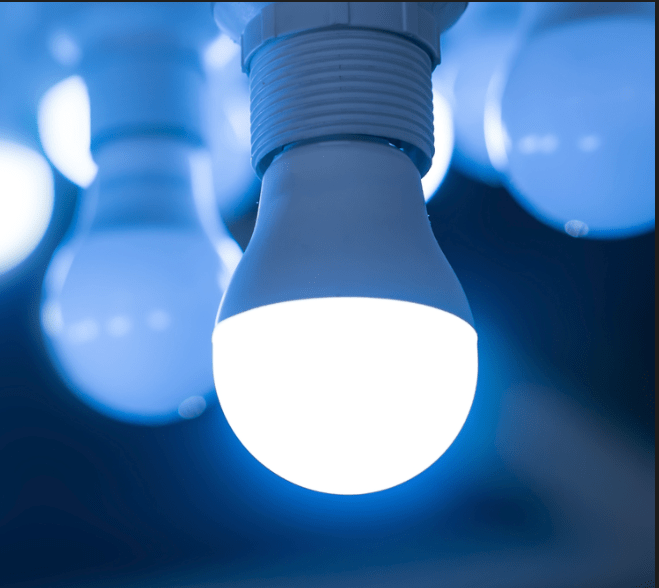Why Utah and Reno Should switch to LED and Solar

As Utah and Reno Nevada’s top-rated solar installer, Go Solar Group cares about your home’s energy. The first step is a change in the way we purchase, use, and manage our light bulbs.
If Nevada and Utah want to keep up, they must take note of the changes made to national regulations. These regulations suggest a switch to LED lights is a good idea.
National Light Bulb Regulations Changing
In 2007 the federal government enacted the Energy Independence and Security Act. This law requires light bulbs sold in America to become three times as efficient by 2020.
California started discontinuing bulbs that don’t meet these standards on January 1, 2018. California retailers are now getting rid of their incandescent light bulbs. After these bulbs get sold, they will only sell bulbs that meet the new national standard.
This law isn’t requiring people to get rid of their current bulbs to meet this standard. As your bulbs die out, however, you will only have the option to acquire bulbs that are energy saving.
The change to energy conservation is a step in the right direction. As we get close to 2020, more states will start their push toward light efficiency.
Taking the steps to switch now before this change is nationwide may be to your advantage. Although cheaper upfront incandescent bulbs actually cost you quite a bit more in the long run. The sooner you switch the sooner you can save.
Nevada and Utah Can Save Money by Acquiring Approved Lighting
Incandescents cost about $1 vs $4 spent on an LED bulb. However, when you look at the efficiency of an LED, incandescents don’t compare.
Incandescent bulbs use 60 watts of power and last for about 1,200 hours. LED lights use 7 watts of power and last for 25,000 hours.
One LED bulb is equivalent to 21 incandescent bulbs. This means that over the course of 20 years you would be spending $21 for one incandescent light or $4 for an LED. And that’s only the cost of the bulb; you save even more in monthly energy bills.
The Washington Post found that LEDs pay for themselves in a little as three months. Getting efficient lighting decreases how much you are spending each month on electricity.
Although LEDs save you money the ordinal LED was so bright it gave people headaches. This is one of the reasons why many have continued using the incandescent bulb.
This, however, is no longer the case. LEDs now come in a wide selection of colors, shapes, and sizes.
LED Lighting Options: Color, Shape, Dimming, and Quality
Today there is a plethora of options within the LED variety. These include differences between color, shape, dimming, and quality. If style and nuance of ambiance is your thing, the following section will be of especial use to you.
Color Options for LED lights
There are now LEDs that come in a variety of different colors. If you look at the box of the bulb, it will now say if it is a soft white, warm white, or bright white.
LEDs Now Come in Many Shapes
LED bulbs also have quite the range in functionality. LEDs are now made for spotlights, chandeliers, and Christmas lights.
Get High Tech with Dimming LEDs
Early LEDs continued at the same intensity when they were on. This meant that you either endured an excruciating headache or reverting to caveman-esque darkness.
Now there are many dimming LED bulbs. Allowing you to control the brightness of your living space.
Not all LEDs are the Best Quality
The quality of LED you choose can make a world of difference in your future use. If you want to avoid purchasing a light that may have been poorly designed, check if it is Energy Star qualified. Bulbs that meet these requirements get tested to see if they meet Energy Star standards.
Each certified light has:
-
- no off-state power draw
-
- no flicker when dimmed
-
- instant light when turned on
-
- quality color
-
- consistent light output
- equal or more intense brightness than an incandescent or fluorescent
Rebates for LED Bulbs: Utah and Nevada
With the help of utility rebates, you can save on the initial cost to replace your bulbs as well. There are a few differences between Reno, Nevada, and Utah when it comes to LED bulb incentives.
Utah: Rocky Mountain Power – Looking Beyond the Scope of Solar
Rocky Mountain Power customers can get a reduced price for approved lights. Although all the bulbs on this list are Energy Star qualified not all Energy Star bulbs are on the list. Double-checking, your light purchases can save you from a future headache.
This list gets updated monthly. Check with the retailer before you purchase the bulbs to make sure that they qualify.
Nevada: NV Energy Yet to Institute a Residential LED Incentive
Unfortunately, Nevada doesn’t have any rebates for residential efficient lighting. NV Energy, however, does provide schools and commercial buildings with lighting incentives.
Make A Change See The Benefits
Lights take up a noticeable chunk of your total energy costs. These possible savings make switching your incandescent bulbs a no-brainer.
Solar in Conjunction with LED Improvements
Solar arrays like LED bulbs at a first glance seem like the more expensive option. However, when you look at the long term pay off of solar they save you quite a bit over their lifetime. And when you get solar in conjunction with LED lights you are able to save even more.



Send a Message
Oops! We could not locate your form.